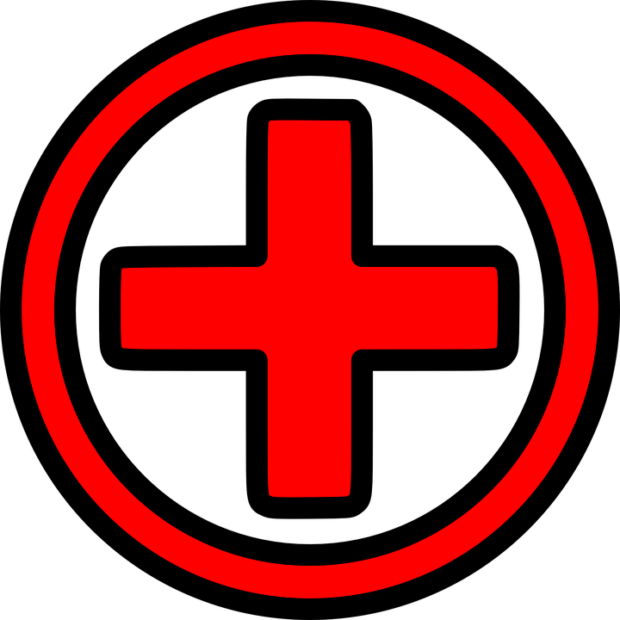Written by Greg Ellifritz
I had an interesting question posed to me by a student in a recent Systems Collapse Medical Class I taught. He asked me:
“If I have to shoot a criminal in a gunfight, should I provide first aid before the paramedics arrive?”
It’s a good question. I’m probably going to ruffle a few feathers with my answer, but I maintain that an armed citizen SHOULD NOT approach a suspect he just shot in order to provide first aid.
It’s simply too dangerous. The criminal may be “playing dead” in order to lure you closer so that he can continue his attack. It might be a ruse so that the criminal can take your own gun away from you. Even if the criminal’s weapon is out of his reach, there’s nothing to prevent him from drawing a second gun or knife. We know serious predators often carry more than one weapon on their person when the commit their crimes.
If you’ve ever taken a first aid class of any type, one of the first things you learned was to do a scene safety assessment. From the Red Cross’ website instructions for performing first aid:

“Step One:
Before administering care to an ill or injured person, check the scene and the person. Size up the scene and form an initial impression.
Pause and look at the scene and the person before responding. Answer the following questions:
– Is the scene safe to enter?
– What happened?
– How many people are involved?
– What is my initial impression about the nature of the person’s illness or injury? Does the person have any life-threatening conditions, such as severe, life-threatening bleeding?
– Is anyone else available to help?”
The very first question to answer is “Is the scene safe to enter?” I maintain that entering a scene where the gunman (who just tried to kill you) is laying injured IS NOT SAFE BY ANY METRIC OF EVALUATION.
The primary duty of a first aid responder is to avoid creating even more victims by acting recklessly. Putting hands on a violent criminal who may or may not be trying to lure you to your death is a recipe to do just that.
You simply can’t protect yourself and render aid at the same time. Besides the primary suspect, you may be extremely vulnerable to any of his accomplices while your attention is focused on providing medical attention. It’s a bad idea.
In addition to the fact that the bad guy may be luring you in, he might be actually unconscious but become reanimated and dangerous again. For an example of this, take a look at the police shooting in the video below.
Houston Police Shoot Suspect At a Mall After He Allegedly Shot A Deputy
The officer locates the suspect, who then disobeys the officer’s verbal commands and charges him with a knife. At 3:34 in the video, the officer fires five rounds at the man. The suspect falls to the ground unconscious. Fifteen seconds later, the man regains consciousness, stands up, and begins walking away from the officer.
This phenomenon happens fairly regularly and few people consider it in their response plans. People drop unconscious after being shot due to a rapid loss in blood pressure. Not enough blood is getting to the brain to sustain function. When they fall, the heart no longer has to fight gravity to get oxygenated blood to the brain. Even with a lower blood pressure, the brain again becomes perfused with oxygenated blood. People then “wake up” and are often fully capable of sustaining violent action for a short period of time.
It is for this reason that I don’t think it’s a good idea to immediately approach a downed attacker. If he had been still armed, he could have easily shot the officers who had approached him. After your shooting, don’t rush in to provide medical aid.
In the event of a defensive shooting, seek cover within view of the downed suspect and keep your weapon trained on him in the event he decides to continue the attack. Call police and tell them that a man has been shot. Request an ambulance. That’s probably the safest course of action you could take that would be judged “reasonable” in a court of law.
If you wish to do more than that, instruct the suspect to lay on his wound, pressing it into the ground to provide direct pressure. If you can toss him a towel or piece of clothing he can use to staunch the bleeding, feel free to do so…but only if you can do it without losing sight of your attacker. Give him verbal instructions about how to stop any serious bleeding he might have. That’s as far as I would go.
Think about it this way: when the cops come to arrest the criminal, they will probably use team tactics and at least one cover officer to make the approach. If I was responding, I’d wait until I had at least one other officer on the scene to cover me before approaching any armed suspect…injured or not. If I don’t feel comfortable enough to put hands on the injured attacker without the assistance of my armed co-workers for backup, you certainly shouldn’t feel safe approaching him alone to provide first aid.
I spent 25 years as a cop and I’m currently both a police tactics and first aid instructor. I am not a lawyer. As such, you shouldn’t consider this legal advice. I am solely relating how I would handle the situation. I would not approach the attacker I just shot. I don’t think you should either. An armed citizen has no legal duty to provide aid in any circumstance. If you are a cop on duty, you may be required to provide aid. Check your state’s law and any relevant court cases to determine the proper course of action you should take in a similar situation.

